
South Oxfordshire & Berkshire
(the Bristol perspective!)
or
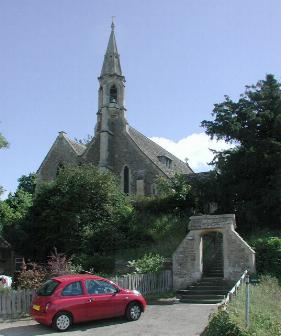 |
The day started well for me, it was bright
and rather sunny in Bristol, and the forecast was for
more of the same but reaching no more than 19C. St Michael & All Angels, CLIFTON HAMPDEN, Oxfordshire I arrived at the rendezvous bang on 10am, no sign of the others so I walked past the church porch to take some external shots. I lingered at the porch to enjoy the view of the Thames and the red brick bridge over it before trying the handle. To my surprise dd, John S and Adrian were already inside, the first two digitalising the interior features. Marion arrived and soon Diane joined us too, and to my horror I realised I had passed her walking along the main road some two miles west of the village. St Michael and All Angels church seems externally entirely Victorian, and indeed the main restorations were done by G G Scott in 1844 and 1866. |
| However inside it is a different story, with a late Norman S. Arcade, the piers standing on big stone bases which form seats, and a standard C15 north arcade too. Many pieces of medieval glass survive in the windows on the south side, although some looks decidedly domestic (e.g. a set of birds), which get no mention in the BofE. The chancel is what was expected, with opulent C19 fittings including a splendid metalwork screen and reredos with mosaic scenes. On the N side of the sanctuary is a very large canopied tomb recess with the recumbent figure of G H Gibbs who presumably paid for all this finery. The most intriguing item was however a relief of three animals and a man who is holding up the tail of the central beast with his hand. This is supposedly a boar hunt. | 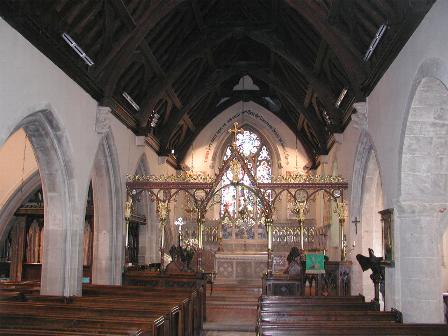 |
We lingered until 1050, and then left a note with the visitors book to say we had moved on to Dorchester Abbey, and a phone number on which to contact the group..
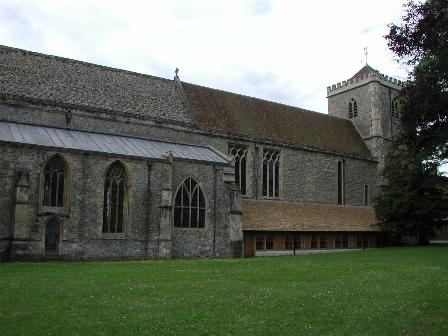 |
We were not sure whether the major restoration and alterations started some 18 months ago would be complete and they were not but the church is currently in a useable and fully equipped state. The cloister like lean to on the north side is done as is the disabled access ramp inside the church. No Visitors centre yet, nor rooms under the tower and west end. The rest open as usual and fully-explorable. I felt better disposed to it today, although the exterior is incredibly dull on the south side, long and seemingly low (due to its length and short tower). Inside a solid wall pierced by a door divides the south aisle into aisle and chancel chapel. The richest parts are the east end of the sanctuary with its famous Jesse window and sedilia (with depictions of the seven deadly sins) and the south chapels. Here are gathered several good but damaged tombs and effigies, including as Marion put it a beautiful "flowing" figure of a cross-legged knight, indeed much more life like than many of the awkard poses of other knight effigies. |
In the south aisle was an amazingly large corbel on one of the piers, unfortunately heavily covered in foliage (a wedding was imminent), depicting monks being awoken by the devil sounding his horn, and a small but ornate lead font with seated figures under norman arcading. I liked the nearby epitaph to the 26 year-old Mrs Sarah Fletcher (d1799) who "when nerves were too delicately spun to bear the rude shakes and jostlings which we meet with in this transitory world, Nature gave way, She sunk and died a martyr to excessive sensibilty." Perhaps an early case of what we call today obsessive-compulsive disorder!?
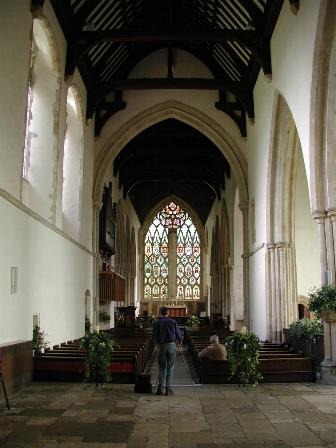 |
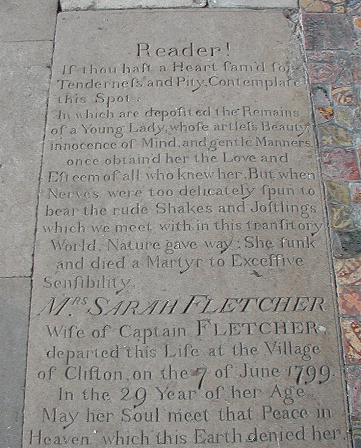 |
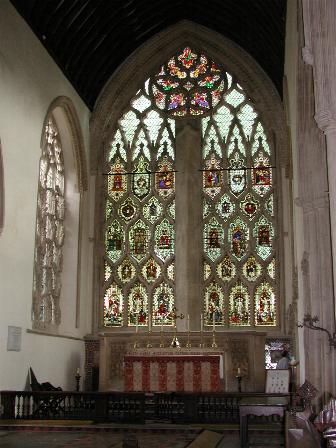 |
We lingered again but no-one approached us and it seemed therefore that this could be our final number. With a further church and an earlyish lunch in mind we proceeded to
ST LAURENCE, WARBOROUGH, Oxfordshire
Aisleless, quite large, and with a bulky west tower prominently dated 1666 and with chequerwork decoration on the clasping buttresses. Nave and chancel in one with a south transept and porch. Inside a screen combines with a typanum to seperate the chancel from the nave. Another lead font, with small figures, rosettes and on a Perp panelled base. Crude in comparison to that at Dorchester.
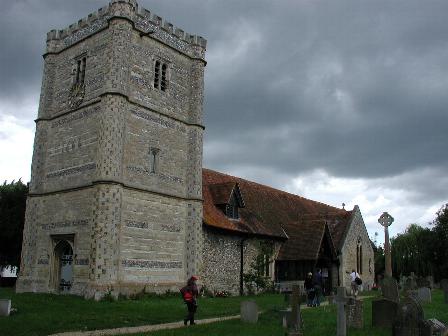 |
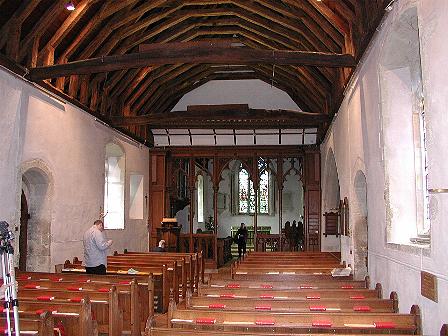 |
Then it was across the road to the Cricketers and a lunch that took ages to arrive, but was all freshly prepared from scratch. The afternoon was further planned as we sat outside with our drinks.
Suitably refreshed and rested we braved perhaps one of the worst road junctions I have ever negotiated, turning right off the main road on a completely blind U-shaped bend. I missed the tiny sign pointing to
ST HELEN, BERRICK SALOME, Oxfordshire
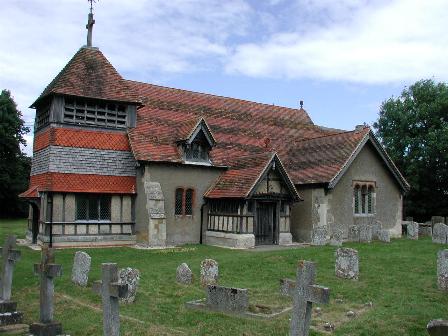 |
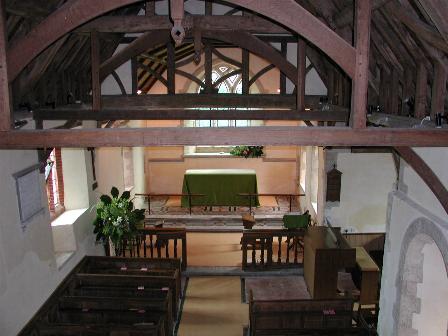 |
Marion had spotted that the BofE described this church with the opening words "Restored 1890 by A M Mowbray - a hideous application of all the trappings of fashionable late C19 domestic architecture to a church." Not sure what we expected but we all liked it, and it was Adrian's favourite so far. We also decided that Mr Neil would have this as a favourite too. Yet despite this doing over several old features survive, in fact much seems to be of the early C17. Flowery guidebook description puts the Norman font as "Saxon" and "brought from Northumberland". Pretty west gallery, resting on corbels which seem out-of-place and with odd incomplete inscriptions e.g. " & of the" (with a dove). The stained glass here consisted of a single bee in the south transept.
ST KATHERINE, CHISLEHAMPTON, Oxfordshire
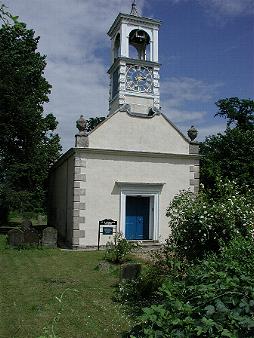 |
Built in 1762, a small complete Georgian Church. Our numbers were augmented here by Andy who had travelled down from Birmingham, phoning dd to find out where we were. Fittings all of a period, apart from a Jacobean pulpit. Font " a pudding basin" on a wooden stand. Another west gallery too. The church is now in the hands of the Churches Conservation Trust, with a value for money guidebook priced at 20p on the cover but 25p on the notice! The keyholder next door was out, so I got the key from the pub down the road to Stadhampton. | 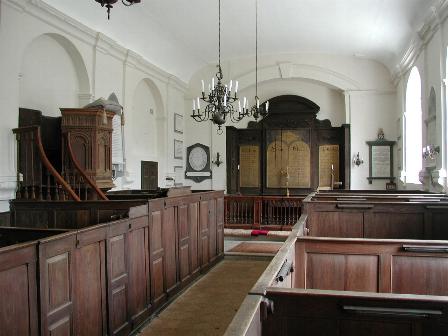 |
The numbers dropped back again as Adrian took his leave from us here to drive back to Lincolnshire and an evening engagement.
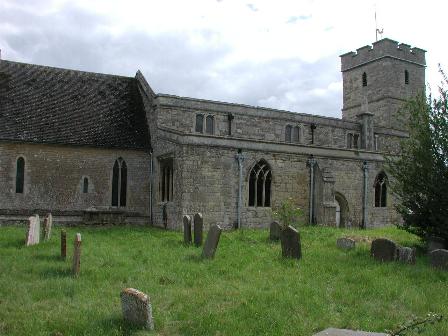 |
ST MARY, LONG WITTENHAM,
Berkshire A fairly large building, with a grand EE south arcade, but an earlier chancel arch.Here is another lead font, a better example than Warborough but not as good as Dorchester. There are only 29 left in England and we saw three of them today! This font was later encased in wood, the case now surviving in the south aisle as a table. The most interesting feature is however easily missed unless you explore the south transept (now a vestry) carefully. Here is a piscina with two censing angels on the arch and a miniature effigy of a cross-legged knight on the sill. |
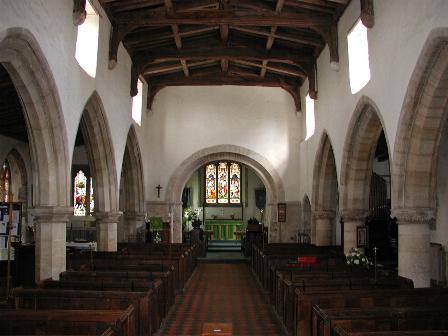 |
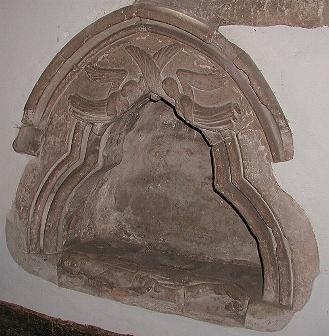 |
| ST PETER, LITTLE WITTENHAM,
Berkshire [locked, no keyholder information, most unhelpful when contacted] Medieval tower, the rest rebuilt by C Buckeridge in 1863. Quite a handsome building with many monuments inside which we did not get to see as only one person's telephone number appears on notices [head of flower-arranging] and she was not prepared to offer any help when Diane phoned her. The road also attacked dd's car so he did not want to linger here! Time for another? |
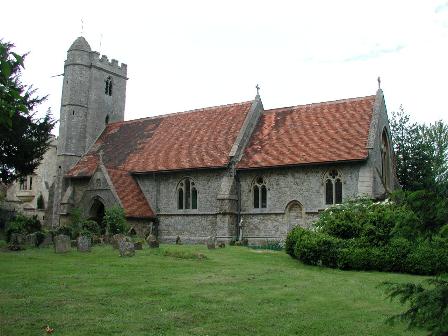 |
ST AGATHA, BRIGHTWELL, Berkshire
Attractive exterior with a plain C18 brick west tower cuddling up to the clerestory. The interior a little disappointing, but with several brasses set in the floor. (Did we replace all of those mats?) Quite large, a mix of medieval and C19 restorer! Odd that the latter can never leave classical features alone, the west door has been altered with a small narrow Gothic shafted doorway and plate traceried opening above, all inside the orginal doorway.
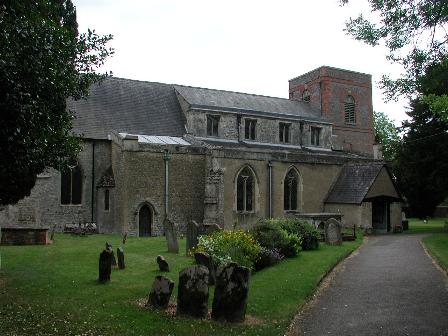 |
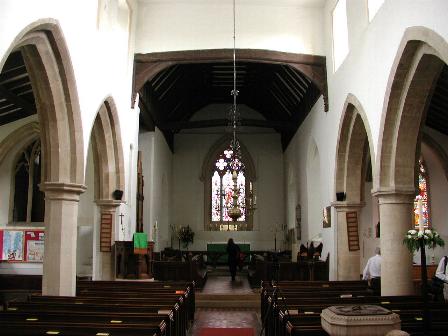 |
Marion and John said their goodbyes here and I took Diane to Didcot station. DD Andy and I had one more target, the village of East Hendred and its three churches.
| JESUS CHAPEL, EAST HENDRED,
Berkshire [locked] A small chapel adjoining a house, C15. It is open for a couple of hours each summer Sunday afternoon. |
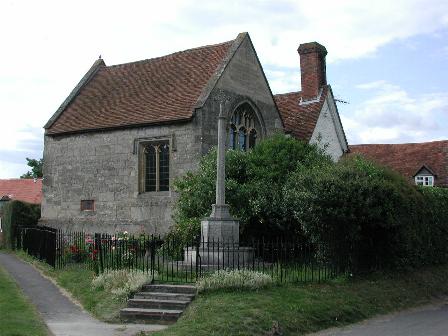 |
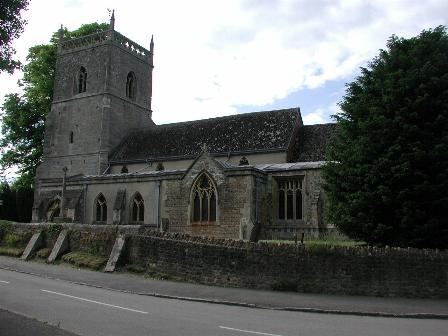 |
ST AUGUSTINE, EAST HENDRED,
Berkshire Another large church with some interesting fittings and an outer south aisle which Pevsner neglects to mention. Medieval work (much restored) in the stalls, south chapel screen and in a ceilure over the C19 or early C20 rood screen. Contrasting two-bayed chancel arcades, high Victoriana on the N side and elegant Perp on the south. Flemish or German chest now seres as an altar in the north transept. Confusing lectern, an amalgam is likely, but on a base said to be three crocodiles, but look like pigs or dogs to me! |
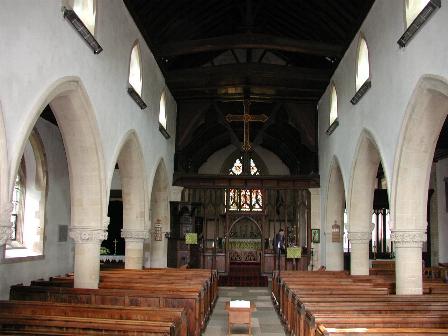 |
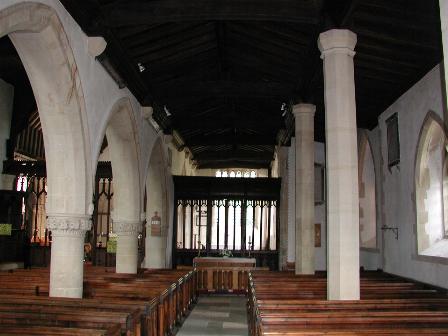 |
I took my leave of dd and Andy here, and went to
ST MARY(RC), EAST HENDRED, Berkshire
1865 by C A Buckler, a handsome well-detailed church with a SE spirelet and large windows. Nave with north aisle and chancel. The chancel screen oddly across between the first and second bay of the chancel.
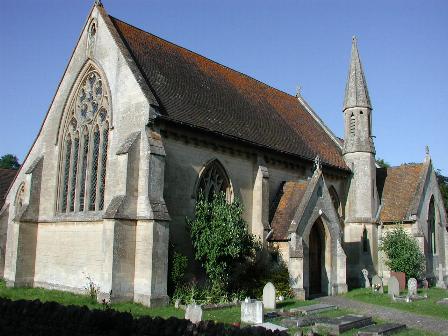 |
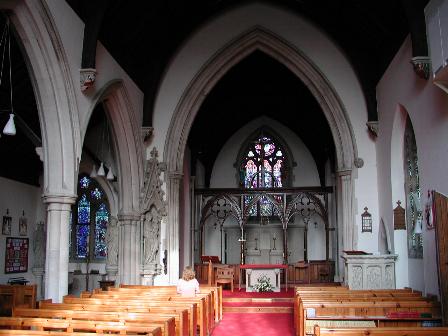 |